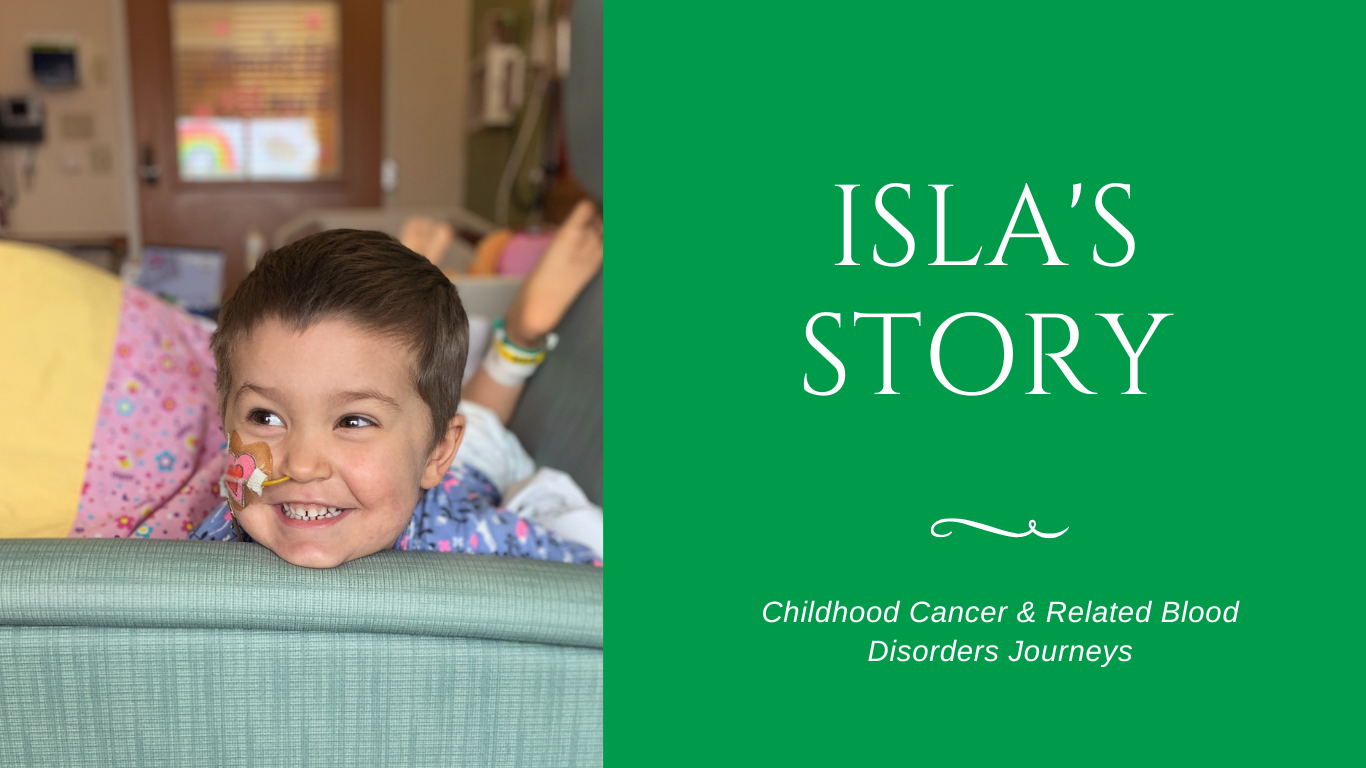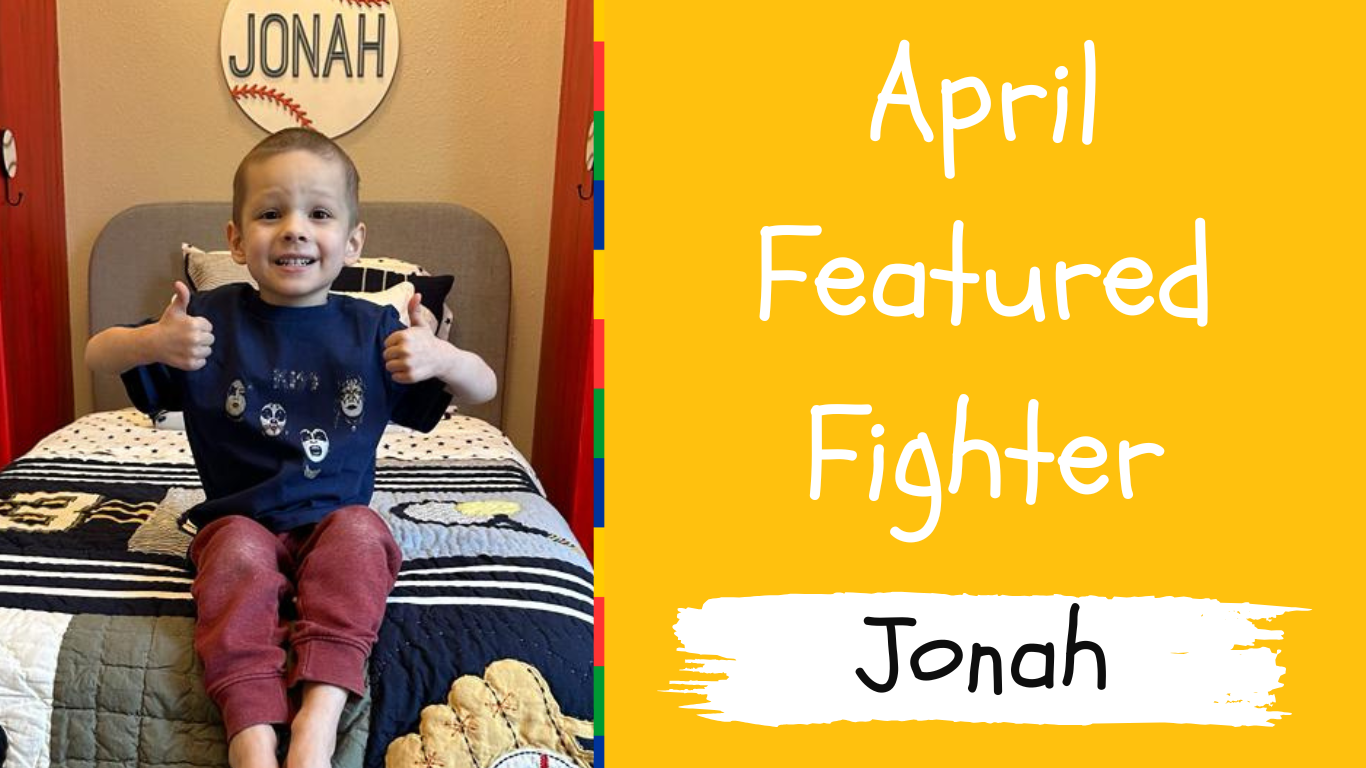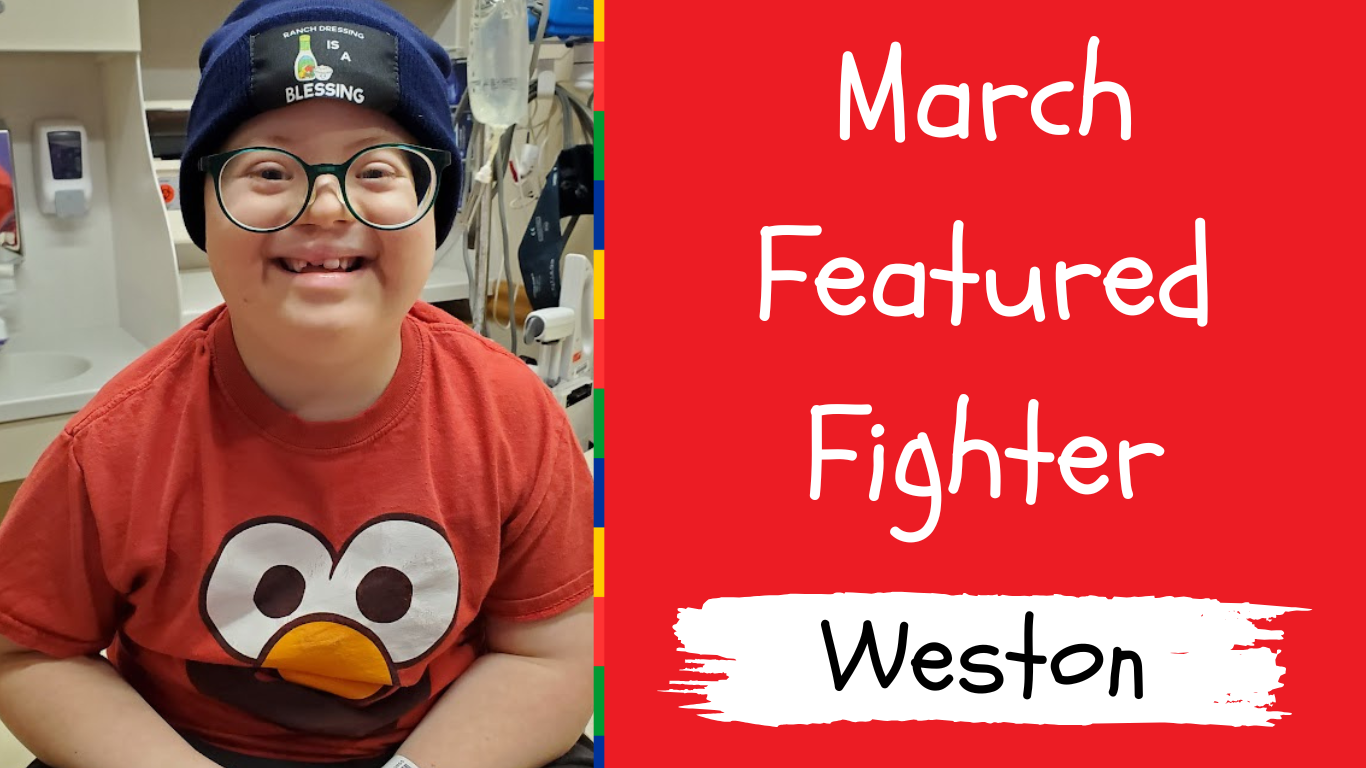Age: 5 Diagnosis: Bilateral Optic Pathway Gliomas and Gliomas of the Hypothalamus and Thalamus Meet…

Isla’s Story
Age: 3.5
Diagnosis: Acute Myeloid Leukemia
Favorite Things: glitter, horses, Frozen, racing, and hugs
This month’s Featured Fighter story will take on a different format. I, the writer of these monthly stories, am the mom of Isla, this month’s Featured Fighter. This is my family’s story.
Meet my daughter, Isla, a sparkly little three-year-old with contagious laughter, boundless energy, and an insatiable drive to squeeze the most fun out of every day. My family was introduced to the cruel world of childhood cancer in July of 2019.
I had just arrived home from the zoo with my 5-year-old son, Sawyer, and 2.5-year-old, Isla, when I noticed little odd-looking purple freckles all over Isla’s legs. As I surveyed the rest of her body, I noticed a couple of big bruises on her hips and legs. Once I got the kids set up with lunch, I went down a Google spiral. When everything that popped up was incredibly serious, I began to panic and called the pediatrician’s office.
That afternoon, the doctor looked at her rash and confirmed my suspicion that it was petechiae, tiny brown-purple spots that develop due to bleeding under the skin. He knew I had probably done some research and assured me I had no need to worry. “Isla is healthy and very well seeming; this is not a sick child. It’s not going to be anything rare and scary like leukemia. But let’s just run some quick blood tests to check all the boxes. It’s always best to be thorough.”
That evening, I stepped out of the shower to find seven missed calls and a text from the doctor. When I called back, he answered after one ring. “I’m so sorry. Isla has leukemia.”
I ran to the bathroom and threw up. Again and again, I threw up. In that moment, my body was ahead of my mind in understanding our new reality. My husband, Michael, walked into the bathroom weeping, the doctor still on speaker. “Plan to stay overnight,” the doctor says. “I’m so sorry. You need to leave for the hospital right now.”
Within the hour, we were in the emergency department at Children’s Wisconsin. In the days to come we moved between terror, confusion, exhaustion, and this frozen sense of time at a mind boggling rate. Isla was diagnosed with Acute Myeloid Leukemia, an incredibly aggressive form of cancer that requires 6-9 rounds of equally aggressive chemotherapy. The chemotherapy being so aggressive that it isn’t safe to go home after the infusion. Each round required a month and a half long hospital stay with only a few weeks at home between each round.
When a child has cancer, it affects the whole family. Beyond the ever-present desperation and anxiety a parent feels when trying to save their child’s life, there are the grueling logistics to contend with. Life doesn’t stop for cancer. One month after Isla’s diagnosis, our third child, Ellis, was born, and he became a regular part of our hospital life.
Soon our days looked like this: I was with Isla and the baby in the hospital all day while my husband worked, and Sawyer was at kindergarten. At 5pm, Michael and I switched shifts in the valet area of the hospital. I went home with Baby Ellis so I could also be with Sawyer overnight while Michael spent the night in the hospital with Isla. The next morning, in the valet area, we switched again- Michael going to work straight from the hospital, me with the baby and Isla at the hospital. Michael was never home, and he was never with his new baby son except the occasional weekend when a friend or family member stepped in to take a shift at the hospital.
Two months into treatment, flu season policies were put in place at the hospital preventing my oldest from ever visiting. For almost a full year, Sawyer and Isla only had a relationship over Zoom and the very short 2-week stints at home. Though our family was separated throughout Isla’s treatment, we were completely held up by our friends, family, and total strangers from the community.
And, though Michael and I were always hanging on by a thread, Isla was unbelievable. She would ride around the halls on a toy giraffe chasing nurses with her “evil villain laugh”, all while attached to her IV pole she affectionately named “Bobo”—me chasing behind her, pushing the pole with one hand, holding the baby with another—we were a sight. Isla had boundless energy to give out hugs, make friends with other patients, paint snowmen on her hospital window, and come up with endless games to fill our endless days within the same four walls.
In December, just before Christmas, we found out Isla relapsed while still in treatment. She would now require a bone marrow transplant to save her life. Fortunately, her big brother, Sawyer, was a match. But, every month, something would keep Isla from getting that transplant- bacterial infections, fungal infections alongside 105-degree fevers, ICU stays when things got scary, and a disease that was becoming increasingly resistant to chemotherapy with each passing cycle.
Isla’s doctors began to experiment with new cocktails of chemotherapy drugs with the hope that something—anything—would knock her disease down low enough to make it safe enough for her to accept Sawyer’s marrow.
Months of this dragged on, and then the pandemic hit along with fresh terror and the anxious question I couldn’t shake, “Which would be the one to take her out- this disease ravaging her little body or the pandemic hitting her immunocompromised system?” It was a total and complete nightmare to endure family separation, loss of our support system, resistant disease, and a ticking clock of transplant opportunity all within the backdrop of the COVID-19 pandemic.
Finally, in the spring, Isla’s body was strong enough. Finally, her disease was reducing again- sort of. It wasn’t perfect, and it would be risky. But we had no choice; we would transplant. The transplant team harvested Sawyer’s marrow and froze it so Isla could receive it once her full work-up for transplant was completed.
But, the day Isla began the tests and scans in preparation for transplant, new blood results came through. Her leukemia had grown again. This time, it was far too much.
Isla was sent to Lurie Children’s Hospital in Chicago for a Stage 1 immunotherapy trial. Isla was one of six children in the world to test out this drug for her unique genetic mutations, a true pioneer. She stayed on the continuous drip of Flotetuzumab for two full months: never leaving the hospital, always hooked up to her IV pole from both her chest and her arm, a heart monitor attached all over her back, and a Pulse Ox always on her toe. It was jarring to see her actually look like the science experiment that she was.
Though those months at Lurie were grueling, it was thrilling when the immunotherapy drug worked so well. Isla had no side effects from the drug other than a minor rash; and by the end of the second month, we found ourselves preparing for transplant yet again. Sawyer’s marrow was waiting, and her disease was down to only 2%. But the team wanted to allow this promising drug to bring her disease down a bit more to boost her chances of remission. We agreed to give it two more weeks.
Two weeks later, Isla had her final spinal tap and bone marrow aspiration to check her level of disease. A few hours after the procedure, she was permitted to go home to Milwaukee so she could have the chance to fulfill her dream of riding a horse before she transplanted. Just one day at home before the long road of transplant.
But when we got home, we quickly knew something was very wrong. She was not recovering from the routine spinal tap in the same energetic way as usual. In fact, she was in extreme pain that kept getting worse and soon she couldn’t walk. To move, she had to crawl- dragging her legs behind her, pulling on them by thrusting her upper body forward.
We immediately brought her to Children’s Wisconsin for an emergency MRI. That afternoon, we found out that this routine spinal tap had caused a hematoma at the base of her spinal cord. Over the next couple of weeks, it would slowly paralyze her from the waist down if they didn’t operate to remove it. We were also informed that even if they did remove it, she would have permanent weakness in her legs.
While discussing our options with the neurosurgeon, another doctor entered the room with the results from the aspiration. Once the room had cleared, the doctor shook as she told us that Isla’s leukemia had grown to over 30% in the last two weeks. There was nothing more that could be done. This was it. Isla had a few weeks to live.
Watching your child rapidly decline over a matter of days in uncontrolled pain; growing paralyzed and not understanding what is happening to the body they, days before, saw as limitless; losing their mental abilities, personality, and desire to be near you- the death happens before the death itself. It’s more than any human should ever, ever endure. Making the choice to end the life-extending chemo drug we administered at home was the most agonizing decision of my life, but it was the right thing to do.
Michael and I spent Isla’s final week sleeping on her bedroom floor each night, not wanting to miss her final moments. Listening to the labored breathing and the fluid filling her lungs, horrific. Time after time, we thought her to be taking her final breath, and we would sing her favorite bedtime song, “Twinkle, Twinkle Litte Star”. But Isla kept pulling through, fighting death to the end.
One evening, after she had been medicated into a deep sleep for several days, I sat down to read Isla one of her favorite books, What Was I Scared Of?, a gentle tale addressing fear of the unknown. When I finished the story, I closed the book and leaned forward over Isla’s bed as I got up from the floor. Her eyes—those big, beautiful brown eyes—flashed open and her arms bolted toward me in tandem. Her hands grabbed my neck and—with what would seem like super-human strength from such a frail body—she pulled me down toward her with a determination so familiar. Isla wrapped her weak arms tightly around my neck in the deepest, strongest, most desperate hug. As she hugged me, I locked eyes with Michael, tears streaming down both our faces. We both knew it. This was Isla’s goodbye.
She weakened again. I laid her back down, kissed her forehead, and whispered my love to her as she looked hard into my eyes. Finally, her eyes fluttered, and she fell into her final sleep- letting go and accepting the peace her body craved.
Isla died on August 11, 2020- shortly before her 4th birthday. It has been almost four years since I kissed her squishy cheeks goodbye and watched a stranger wrap her little body in a bedsheet to bring her out of my house for the last time. That night, I wrote:
“No more pain.
No more pokes.
No more beeping.
No more “tubies”.
No more “BoBo”.
No more procedures.
No more blood.
No more platelets.
No more isolation.
No more swabs.
No more scans in the “big doughnut.”
No more medicines.
No more chocolate syrup.
No more “be careful”.
You are free. You are free. You are free.
Run wild, sweet girl. You are free.”
The pain of this loss and the trauma that my whole family has gone through will never go away. It is these deep scars that push me forward each day that I wake up without her. These scars push me to hold my surviving children even tighter, and they drive me to fight for change in our state and in our country. Our kids desperately need more research, and it cannot move fast enough.
Thank you for supporting research. Thank you for giving hope.
Copyright protected work of the MACC Fund. May not be used or distributed on behalf of any other organization or commercial purpose without MACC Fund’s explicit consent.




